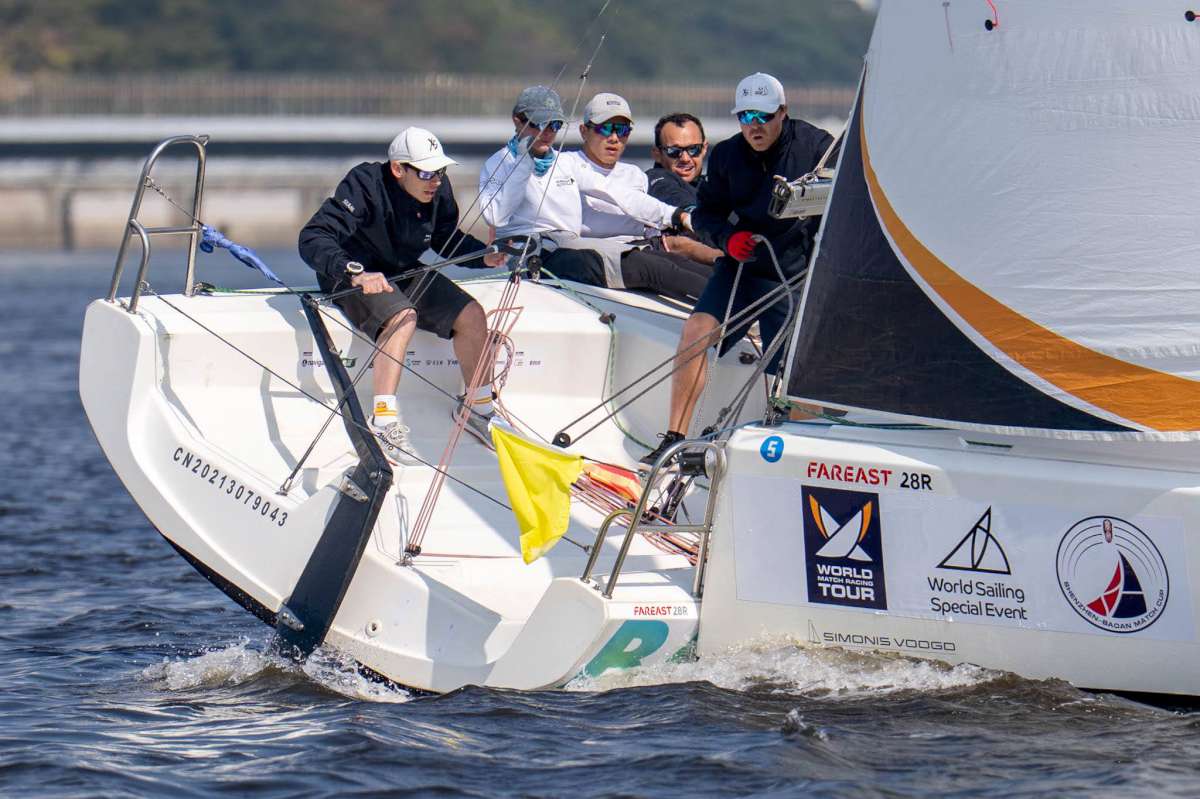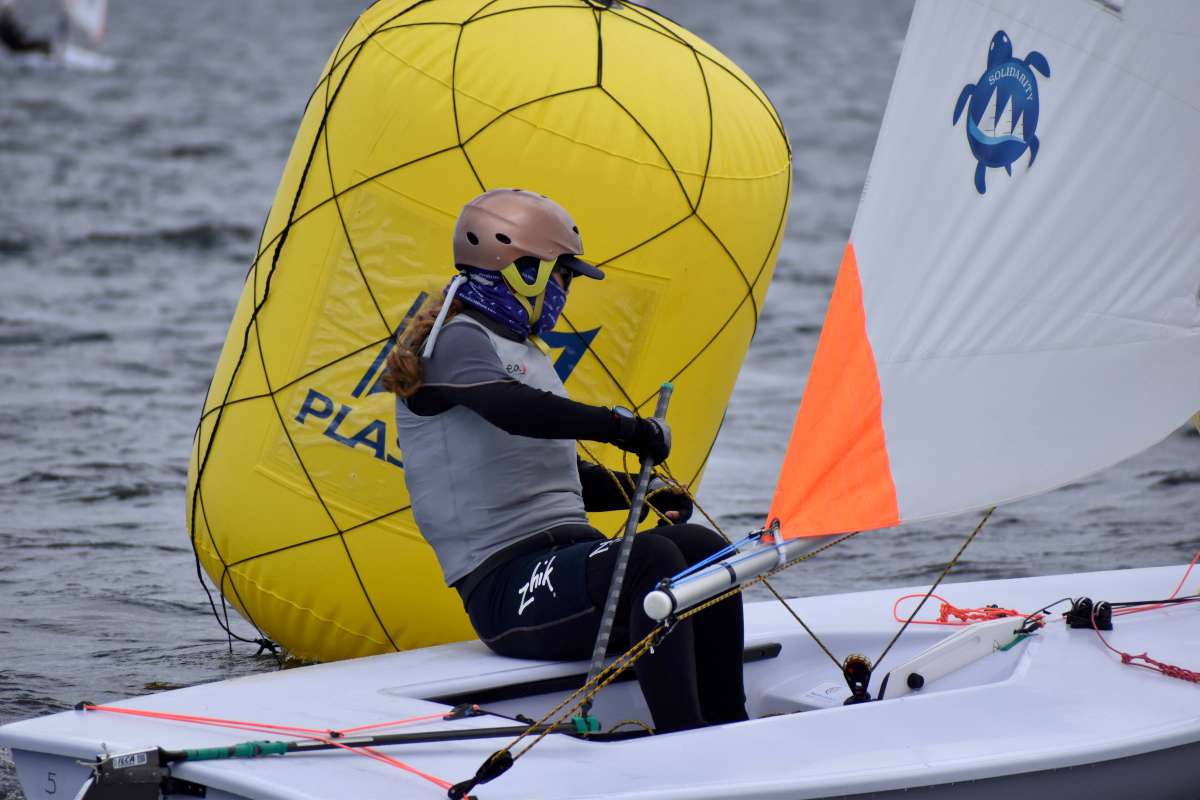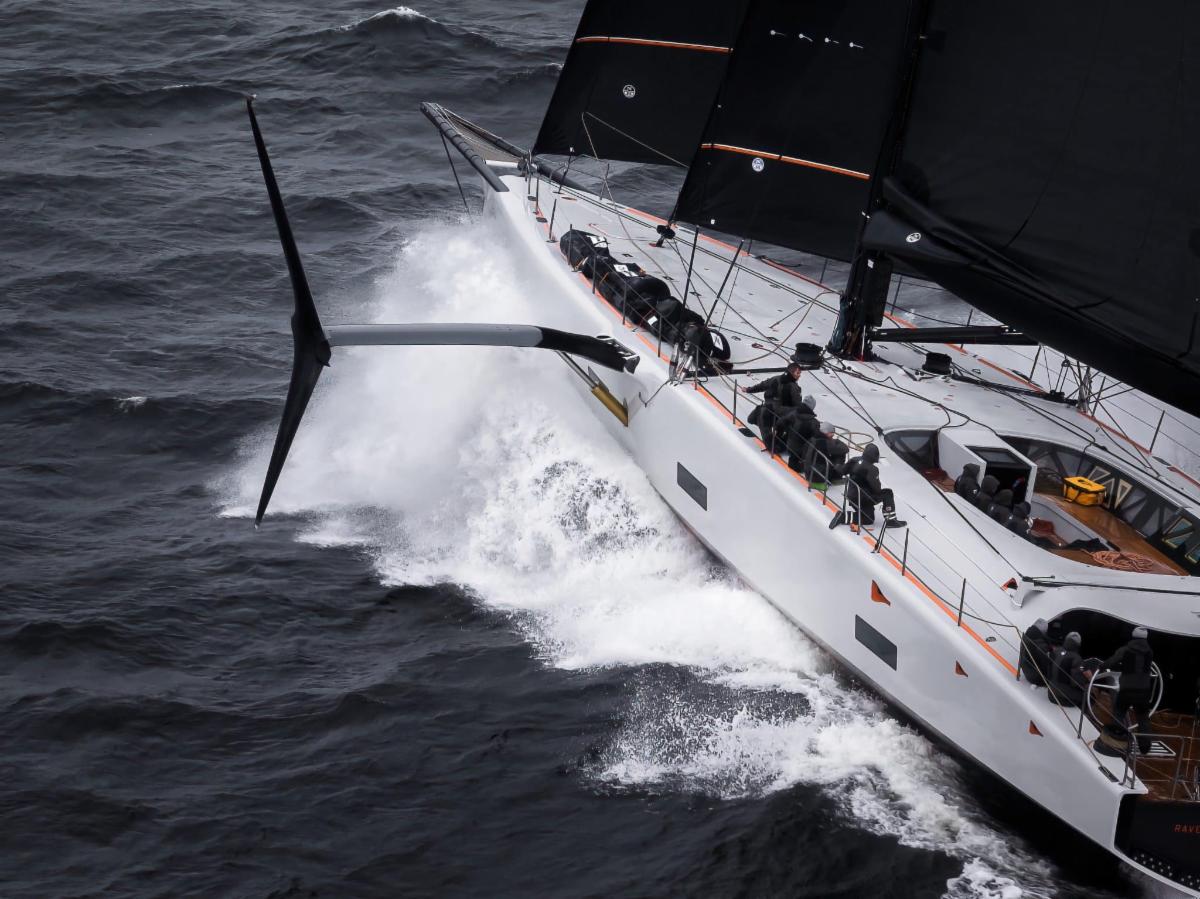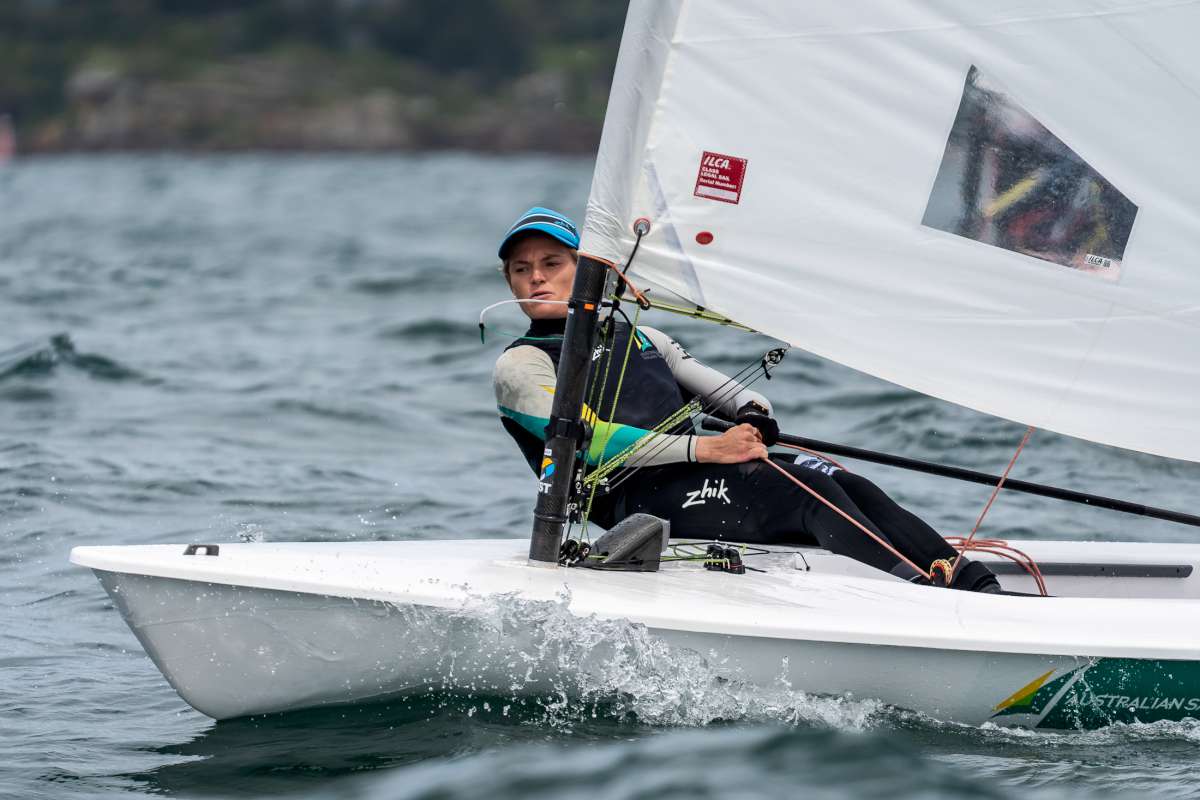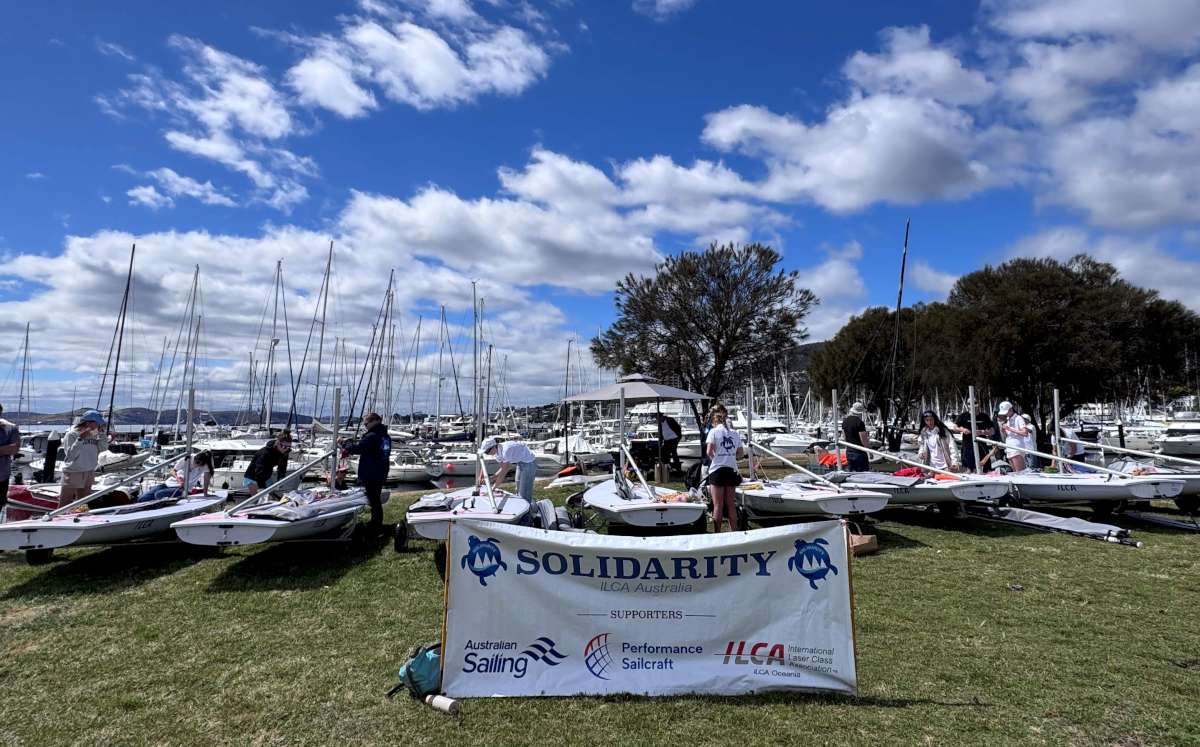Persistent Shift
How to put a more positive spin on your crew’s downwind experiences, by Tony Bull
THE FIRST recorded use of the word spinnaker is believed to have been in 1866, in reference to a downwind sail specially built for the yacht Sphinx in 1865. The very large, lightweight sail was referred to by the yacht’s owner Herbert Maudslay as “Sphinx’s half acre”, which soon became abbreviated to ‘spinnaker’.
Other possible origins could be tied to the obsolete terms ‘spoon’ or ‘speen’, which meant to run before the wind (as in ‘spindrift’). Another possible source was the name ‘spanker’ for a small fore and aft sail set on the mizzen mast of a tall ship.
Regardless of its starting point, the term ‘spinnaker’ has become part of the yachting vernacular and is probably the cause of the most angst among club level and beginning sailors. We have all seen a myriad of pictures and videos of yachts wiping out in sensational style and they are nearly always under spinnaker when it happens.
All yachties have a vast collection of “spinnaker stories”!
Free-flying handful
Two traits make the spinnaker a handful. Firstly, there is the sheer amount of sail area that this sail adds to a yacht’s sailplan. It is not unusual for a spinnaker to be up to twice the size of the combined total of the mainsail and headsail, so it adds a great deal of horsepower.
Secondly, the spinnaker is a free-flying sail, connected to the boat only via the spinnaker pole which is a temporary appendage to the rig. It is not tacked down to the boat like all the other sails, and so can have the ability to “get away” and stream a distance from the hull, making it hard to recover when things go wrong.
No wonder then that the typical twilight beer can race is designated no extras! Working sails are much more good-natured and user friendly. However, conquering the spinnaker is a worthwhile exercise.
Gybing fundamentals
In the April ’09 Persistent Shift column we looked at gybing asymmetricals. This time we are considering symmetrical spinnakers, and the main point to remember is that the sail basically remains flying in the wind and we turn the boat underneath it. It is imperative to try to keep the spinnaker flying all the way through a gybe. This should be a job for your best trimmer.
It is crucial to get the spinnaker out in front of the forestay so when the boat turns, the forestay passes behind the chute and does not hook it up. It can be very hard to get trimmers to ease the sheets and fly the spinnaker out in front like this, because as the pole is unhooked there is a natural tendency to want to pull the spinnaker in close to stop it getting away.
As is always the case, sailing fast is a combination of sail trim and steering, working together. The steerer needs to watch the spinnaker as closely as possible, helping the trimmer to keep it flying. Slowing the boat’s turn a little if the sail luff is curling, or heating up a little if the sail gets ‘shivery’ can help the trimmer and enhance the gybe.
End-for-end gybes
The most common way to gybe a small boat spinnaker is end-for-ending the pole. The pole is unhooked from the mast and that end is transferred to the old sheet/new brace, while the other pole end on the old brace/new sheet is unhooked from the sail and then hooked to the mast. It is a nice, simple process that works well.
I prefer to see the bowman unhook both ends of the spinnaker pole before beginning to reconnect it to the spinnaker. On some boats I see the bowman unhook the pole from the mast and immediately connect it to the new brace without unhooking the pole off the old brace, but having the pole connected to both sheets simultaneously limits the trimmers’ ability to fly the spinnaker out in front of the boat.
Most bowmen will stand in front of the mast facing aft while end-for-ending the pole. But I know of several top one design bowmen who prefer to position themselves for the gybe on the leeward side of the mast, facing forward. Firstly, they are closer to the new brace and can reach it more easily to guide the pole end onto it. Secondly, they are able to see the spinnaker flying and that helps them to appraise the speed of the gybe.
Besides the trimmer, other crew members in the cockpit have a role to play prior to the gybe, easing a little topping lift or foreguy to give a bit of slack so the pole end can be connected to the mast more easily (having both of these controls tight can make it a real struggle to snap the pole end home on the mast). Another way to help is to pull on the windward tweaker as the boat gybes to bring the new brace within arm’s reach of the bowman, so he can hook up quicker without having to search or wait for it..
Dip-pole gybes
Larger boats require a dip-pole gybe, in which the spinnaker pole is disconnected from the spinnaker and swung inboard, where the bowman clips the new brace into the pole end and the pole is then swung outboard on the new gybe. To do a dip-pole gybe is a lot more complicated than end-for-end gybes and requires more crew working in cohesion, while the spinnaker should be set up with a brace and sheet on both clews.
Coming up to the gybe, the tactician should call “ready to gybe”, the bowman then takes the new brace forward to the bow and the mastman raises the pole up the mast track to a point pre-determined and marked to allow the pole to pass through the foretriangle without hitting the forestay.
In the cockpit the pitman will be getting the topping lift ready to be eased, while the trimmer takes up the slack on the new sheet, making sure it is over the top of the pole. If it is underneath the pole, it will be dragged in to the bow as the pole swings in for the gybe and cause issues aplenty.
Meanwhile, the brace trimmer takes some turns of the new brace on the winch, making sure the bowman has enough slack to be able to snap it quickly into the pole beak when the time comes.
The next call from the tactician should be “pole back” and the old brace should be winched or hauled back as the helmsman begins the turn into the gybe. As the boat turns downwind the tactician should watch the angle of the spinnaker luff where it projects up off the pole. Once it increases beyond 90 degrees is the time to call “trip”. If the spinnaker is tripped earlier it will fall to leeward towards the forestay and become unstable; remember we are trying to fly the spinnaker in the same piece of air while turning the boat under it.
On the “trip” call the mastman fires the outboard end of the spinnaker pole and the pole will be swung in towards the bowman in the pulpit, while the pitman eases the topping lift down to a marked point so the pole will be at a convenient height for the bowman to hook in the brace. All this time the trimmer (or on larger boats, trimmers) will be flying the kite on the two sheets.
Once the bow has snapped home the new brace he will call “made”, at which time the helmsman will continue turning the boat through the gybe, making every effort to help the trimmers fly the sail. The brace trimmer takes up on the new brace and the topping lift is rehoisted and the pole reset. The trimmer can then ease the old sheet until all the weight is on the new brace.
Drill for success
Improving your spinnaker technique requires practice, and it is a bonus to have the same crew members doing the same jobs on gybes, drops and hoists as they will soon become synchronised and efficient.
Some useful drills you can do are repeated gybes, with and without the pole. Pole-less gybes really help the steerer and trimmers to learn to work together to keep the spinnaker flying.
It is not a bad idea to make a video from the back of the cockpit as well as off the boat to help you assess your gybing. This can be an invaluable aid in the timing and co-ordination of gybing, as someone might be struggling with their particular task while there someone else has a free set of hands at that moment which could be well used.
From the back of the boat it is very rewarding to see a perfectly synchronised snap gybe done expediently. So get out there and work on your gybes – and make your spinnaker stories good ones.




